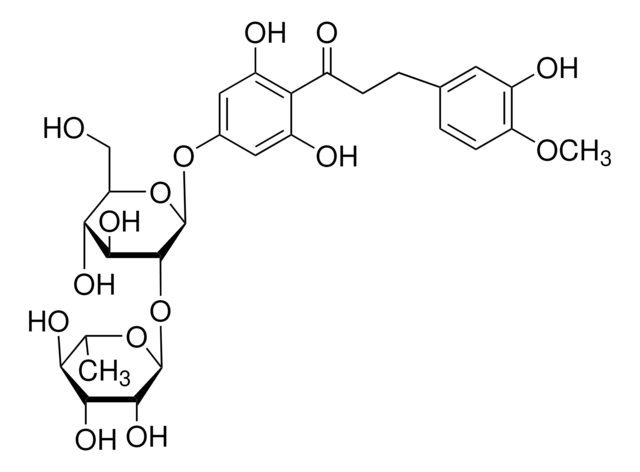T2452
Talsaclidine
≥98% (HPLC), oil
Synonyme(s) :
(R)-3-(2-propynyloxy)-1-Azabicyclo[2.2.2]octane, WAL 2014
About This Item
Produits recommandés
Niveau de qualité
Pureté
≥98% (HPLC)
Forme
oil
Solubilité
DMSO: >5 mg/mL
Température de stockage
−20°C
Chaîne SMILES
C#CCO[C@H]1CN2CC[C@H]1CC2
InChI
1S/C10H15NO/c1-2-7-12-10-8-11-5-3-9(10)4-6-11/h1,9-10H,3-8H2/t10-/m0/s1
Clé InChI
XVFJONKUSLSKSW-JTQLQIEISA-N
Actions biochimiques/physiologiques
Caractéristiques et avantages
Conditionnement
Notes préparatoires
Mention d'avertissement
Danger
Mentions de danger
Conseils de prudence
Classification des risques
Eye Dam. 1
Code de la classe de stockage
11 - Combustible Solids
Classe de danger pour l'eau (WGK)
WGK 3
Point d'éclair (°F)
Not applicable
Point d'éclair (°C)
Not applicable
Équipement de protection individuelle
dust mask type N95 (US), Eyeshields, Gloves
Certificats d'analyse (COA)
Recherchez un Certificats d'analyse (COA) en saisissant le numéro de lot du produit. Les numéros de lot figurent sur l'étiquette du produit après les mots "Lot" ou "Batch".
Déjà en possession de ce produit ?
Retrouvez la documentation relative aux produits que vous avez récemment achetés dans la Bibliothèque de documents.
Articles
Muscarinic acetylcholine receptors mediate acetylcholine actions in CNS and non-nervous tissues, crucial for cell signaling.
Notre équipe de scientifiques dispose d'une expérience dans tous les secteurs de la recherche, notamment en sciences de la vie, science des matériaux, synthèse chimique, chromatographie, analyse et dans de nombreux autres domaines..
Contacter notre Service technique








